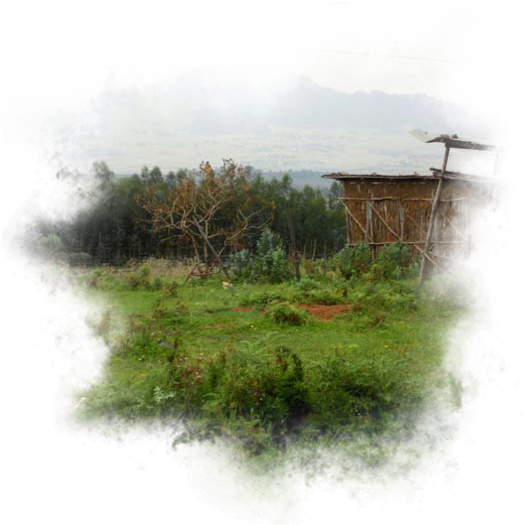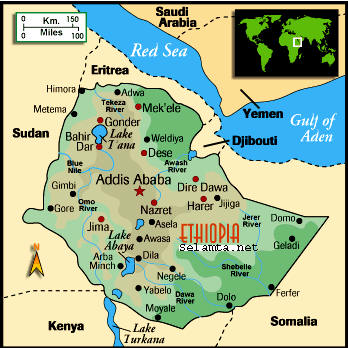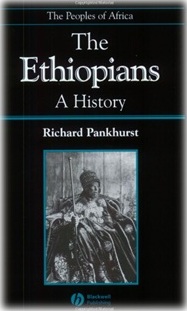
Ethiopia's rich and sovereign history has left its wide ranging and fertile highlands laden with historical treasures, ranging from the ancient tombs and obelisks to 17th century castles and hillside churches.
Ethiopia's landscapes are as dramatic as its cultured past, from the Simien Mountains National Park and Bale Mountains National Park, which offer high altitude trekking and interactions with dozens of animals and birds seen nowhere else on earth, to the Danakil Depression in Northern Ethiopia, an unforgivingly hostile environment offering extreme adventure. The remote lowlands in the southwest are also home to some of Africa's most fascinating tribes.
Testing, awe-inspiring and heartbreaking - travel through Ethiopia will be a journey you never forget.
Ethiopia is located in the Horn of Africa and is bordered by Eritrea, Djibouti,Somalia, Kenya, South Sudan, and Sudan. The country has a high central plateau that varies from 1,800 to 3,000 meters (6,000 ft.-10,000 ft.) above sealevel, with some mountains reaching 4,620 meters (15,158 ft.). Elevation is generally highest just before the point of descent to the Great Rift Valley, which splits the plateau diagonally. A number of rivers cross the plateau--notably the Blue Nile flowing from Lake Tana.The plateau gradually slopes to the lowlands of Ethiopia's neighbors to the west and the Somali-inhabited plains to the southeast.
Addis Ababa ('new flower') is of fairly recent origin - Menelik 11 founded the city in 1887. Situated in the foothills of the Entoto Mountains and standing 2,400 metres above sea level it is the third highest capital in the world. The city has a population of about two million.
Before moving to the present site of Addis Ababa, Menelik had established temporary capitals at six different locations caused by exhausting the fuel wood at each of these sites. Addis itself was in danger of being abandoned until the introduction of fast-growing eucalyptus trees from Australia provided the city with a regular source of fuel.
Addis Ababa is an important administrative centre not only for Ethiopia but also for the whole of Africa. The headquarters of the UN Economic Commission for Africa was established here in 1958 and it is the site of the OAU's secretariat.
The climate is temperate on the plateau and hot in the lowlands. At Addis Ababa, which ranges from 2,200 to 2,600 meters (7,000 ft.-8,500 ft.), maximum temperature is 26o C (80o F) and minimum 4o C (40o F). The weather is usually sunny and dry with the short (belg) rains occurring February-April and the big (meher) rains beginning in mid-June and ending in mid-September.

Ethiopia is located in northeastern Africa, between latitudes 4 and 18 north. It is a ruggedly mountainous country, covering 1,251,282 km. Kenya, Eritrea, Somalia, Sudan and Djibouti surround it.
The capital city is Addis Ababa, and Ethiopia is made up of 9 federal regions. Moreover, Addis is the unofficial capital city of Africa.
Ethiopia has two main seasons, the dry season from October though to May, and the rainy season from June to September. However, in the southwestern part of the country, the rainy season is from March to May. Temperatures will depend on altitude.
Bole Airport, only 7 km from the center of Addis Ababa, is Ethiopia’s main airport with international links to most parts of the world. Most tourist sites can also be reached by domestic flights.
There is an airport tax of US$ 20 for all international departures, and 10 Ethiopian Birr for all domestic flights.
A valid passport and a visa are required for all foreign visitors, except for citizens of Kenya, Djibouti, Sudan and Eritrea. Visas may be obtained by application to the nearest Ethiopian diplomatic mission, by applying to the Ministry of Foreign Affairs in Addis Ababa or for some nationalities, visas are available on arrival. Everyone thinking of travelling to Ethiopia needs to check the rules for their nationality.
Personal effects are admitted free, and a duty-free allowance of one litre of alcohol, 200 cigarettes and ½ litre of perfume is permitted. Video cameras, computers and major electrical items should be declared on arrival.
While the scenic beauty of Ethiopia makes it a photographer’s paradise, photographs should not be taken of military or strategic buildings including airports. Before photographing any person, religious festival or rural homestead, it is courteous to ask permission. While film is readily available in most towns, we recommend that visitors bring plenty of film with them. Commercial photographers require a permit from the ministry of information. Certain tourist sites charge for video photography.
The Ethiopian Birr is the national currency and, while visitors may bring in as foreign currency as they wish. However, it should be declared on arrival to ensure there is no confusion when they depart. Credit cards are not widely accepted outside the major establishments in the cities. US traveler’s checks are recommended.
With its distinctive alphabets, Amharic is the official language of Ethiopia. The second official language, English, is very well understood in most hotels and major towns. Italian, Arabic and French are also widely understood.
All visitors must be in possession of valid vaccination certificates against yellow fever, and vaccinations against hepatitis and cholera are recommended. Malaria precautions should be taken before visiting the lowlands.
Electrical supply is generally 220 volts 50 cycles AC. Same plug as in the UK and/or Dubai.
Ethiopia is 3 hours ahead of GMT. However, apart from using the Julian calendar, Ethiopia reckons the day in two 12-hour cycles (as in much of East Africa). Therefore, midday could be 6 o’clock.
Tourists need to have light cotton clothing with sunglasses and a hat in the warm lowlands, while in the highlands medium-weight clothing, cap, gloves and warm jacket are appropriate. During the rainy season a light raincoat and umbrella are essential, and a sweater is best for chilly evenings. The sun can be very strong in high altitudes, so a strong sunscreen is important.
A handshake greeting is normal, with a pleasant discussion on personal matters before getting down to business. The offer of tea or coffee is normal, and time is not that important. Smoking is not popular amongst traditional people, or in front of priests. Shoes are often taken off on entering churches, and always on entering mosques.
Ethiopia's population is highly diverse. Most of its people speak a Semitic or Cushitic language. The Oromo, Amhara, and Tigreans make up more than two-thirds of the population, but there are more than 77 different ethnic groups and languages within Ethiopia. Some of these have as few as 10,000 members. In general, most of the Christians live in the highlands.
Like all countries with a broad mixture of people, their day-to-day lifestyle is influenced as much by their surroundings as by their heritage. Many people are traditional herdsmen-Ethiopia has the largest herds in Africa-and 90% of the population are engaged in agriculture.


The attached document provides the contact details of our recommended hotels and guest houses. Please be aware that prices are subject to change and in some cases, if you feel comfortable, have a conversation to negotiate the price.
We've included a list of drivers which visitors to RAEY have used before and come highly recommended. The attachment lists their mobile numbers and email addresses where we have one.
We appreciate your interest in RAEY and are glad you want to stay up to date.